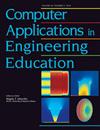Application of MS Excel and FastTest PlugIn to automatically evaluate the students' performance in structural engineering courses
Abstract
Background
In recent years, the method of assessment in universities has been rapidly changing, shifting from entirely in-person evaluations to a blended evaluation approach (b-Learning).
Purpose
To effectively implement this type of assessment, it is necessary to create numerous similar problems with different data sets. In structural engineering courses, this entails a significant amount of work for the lecturers. Therefore, this work introduces a novel teaching and evaluation strategy leveraging technology to automate tasks, aiming to enhance student monitoring and alleviate lecturer workload.
Method
The digital platform Moodle has been used combined with the FastTest PlugIn to create computer coding to develop different problems. These problems, maintaining consistent structures but varying data, served both instructional and evaluative purposes in two structural engineering courses. As a novelty, these problems are automatically evaluated and created following the coding routine created. Some drawbacks have been identified while applying the method. Scientifically validated quizzes have been used to assess the efficacy of the method in engaging students and enhancing their confidence and satisfaction.
Results
Findings suggest that while initial setup requires additional time, the investment pays off in the grading efficiency, benefiting educators and students alike. The method has facilitated the creation of additional exercises for practice, and the inclusion of automatically corrected diagrams was appreciated by students. The results have indicated that this method has improved the motivation, attention, and confidence among students, leading to significant enhancements in academic performance, up to 40%.
Conclusions
This methodology has achieved positive responses from students. Hence, it is concluded that the time invested in developing structural engineering problems using MS Excel and the FastTest PlugIn in Moodle is worthwhile, as it motivates students to improve their academic performance. Furthermore, as the main outcome, it is shown that the time invested by the lecturer in developing the problems is amortized in subsequent academic years since the problems are graded automatically. For courses with many students, it is amortized sooner.


 求助内容:
求助内容: 应助结果提醒方式:
应助结果提醒方式:


